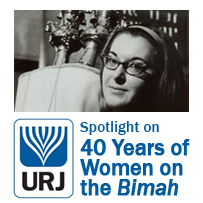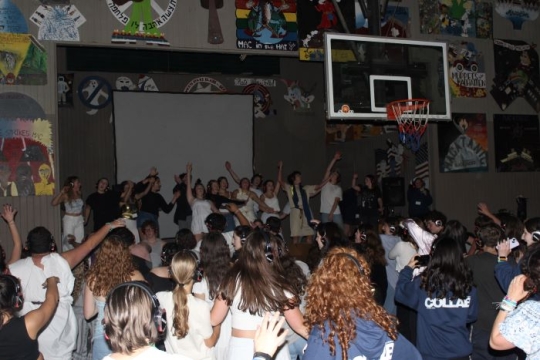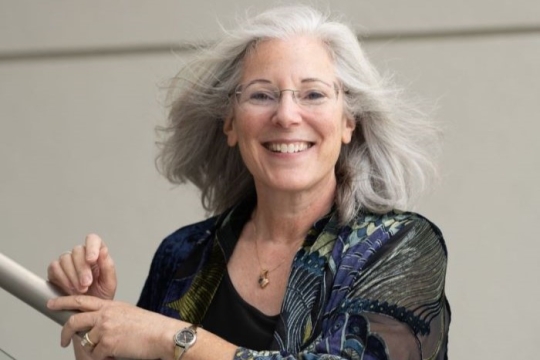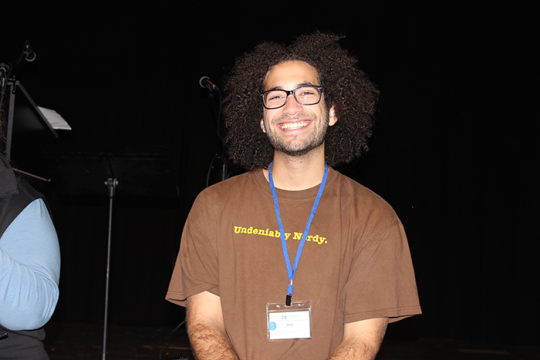
“A woman belongs on the bima as much as an orange belongs on the Seder plate.” The story of a male rabbi declaring this statement after a lecture in Florida may not be true, but ever since my family and I heard that saying, we have placed an orange on our Seder plate. The Seder table also features Miriam’s Cup, to which each woman seated at the table adds water as we honor our ancestor. While we practice the Seder once (or twice) a year, including women in such a tradition-rich ceremony serves as a symbol for our actions for the remaining 364 (or 363) days of the year. I have always been interested as to how our people follows matrilineal descent. According to halakah, a person is “Jewish” based on whether his or her mother is Jewish (Kiddushin 3:12). Of all the laws and practices – many of which exclude women – the establishment of whether you’re a member of the tribe relies on women. But the responsibilities and honor involved in being a Jewish woman go beyond continuing the bloodline.  We make the matzoh ball soup; we nag our sons to become doctors or lawyers; we set up our daughters with nice Jewish boys. We are active in our sisterhoods; we push food on others, whether they’re hungry or not. Basically, we are Golde from Fiddler On The Roof. Or at least, that’s what Jewish womanhood stereotypically means. As you may know, NFTY’s Action Theme this past year was “Mishpachah – Family: NFTY Addresses Human Divides.” Under this umbrella, our youth movement learned about, advocated and acted on many social issues, ranging from immigration to LGBTQ rights to gender equality, which included discussions on equal pay. We worked to bridge the pay gap by starting the conversation now, as opposed to waiting until we enter the workforce. Being a young Jewish woman is such an opportunity to create our own history. What do we want this role to mean to our daughters and to us? How will the Sarah, Rachel, Rebecca and Leah of ancient times influence the Sarahs, Rachels, Rebeccas and Leahs of now? That thread of being a Jewish woman links us to our ancestors, as we take on this legacy. The purview of gender equality extends further than placing an orange on the Seder plate and Miriam’s Cup on the table. What really needs to be brought to the table is our recognition as equals. We each bear the burden and joy of carrying our people l’dor vador, from generation to generation.
We make the matzoh ball soup; we nag our sons to become doctors or lawyers; we set up our daughters with nice Jewish boys. We are active in our sisterhoods; we push food on others, whether they’re hungry or not. Basically, we are Golde from Fiddler On The Roof. Or at least, that’s what Jewish womanhood stereotypically means. As you may know, NFTY’s Action Theme this past year was “Mishpachah – Family: NFTY Addresses Human Divides.” Under this umbrella, our youth movement learned about, advocated and acted on many social issues, ranging from immigration to LGBTQ rights to gender equality, which included discussions on equal pay. We worked to bridge the pay gap by starting the conversation now, as opposed to waiting until we enter the workforce. Being a young Jewish woman is such an opportunity to create our own history. What do we want this role to mean to our daughters and to us? How will the Sarah, Rachel, Rebecca and Leah of ancient times influence the Sarahs, Rachels, Rebeccas and Leahs of now? That thread of being a Jewish woman links us to our ancestors, as we take on this legacy. The purview of gender equality extends further than placing an orange on the Seder plate and Miriam’s Cup on the table. What really needs to be brought to the table is our recognition as equals. We each bear the burden and joy of carrying our people l’dor vador, from generation to generation.
To me, being a young Jewish woman means not second-guessing the chanting of the Avot V’imahot. To me, being a young Jewish woman means earning just as much as my male counterparts. To me, being a young Jewish woman means someday raising my children with faith that they will not be limited by whichever gender with which they associate. To me, being a young Jewish woman means having the ability to pray at the Western Wall uninhibited. To me, being a young Jewish woman means taking the strength and courage I have garnered from watching my grandmother and mother—taking advantage of all I can to do more, be better and live in harmony with all people. Avra Bossov is the 5771-5772 NFTY Social Action Vice President. She recently completed her freshman year at The George Washington University.
Related Posts

Finding My Place at The Collab

A Chat with Dena Morris Kaufman, NFTY’s First Female President

